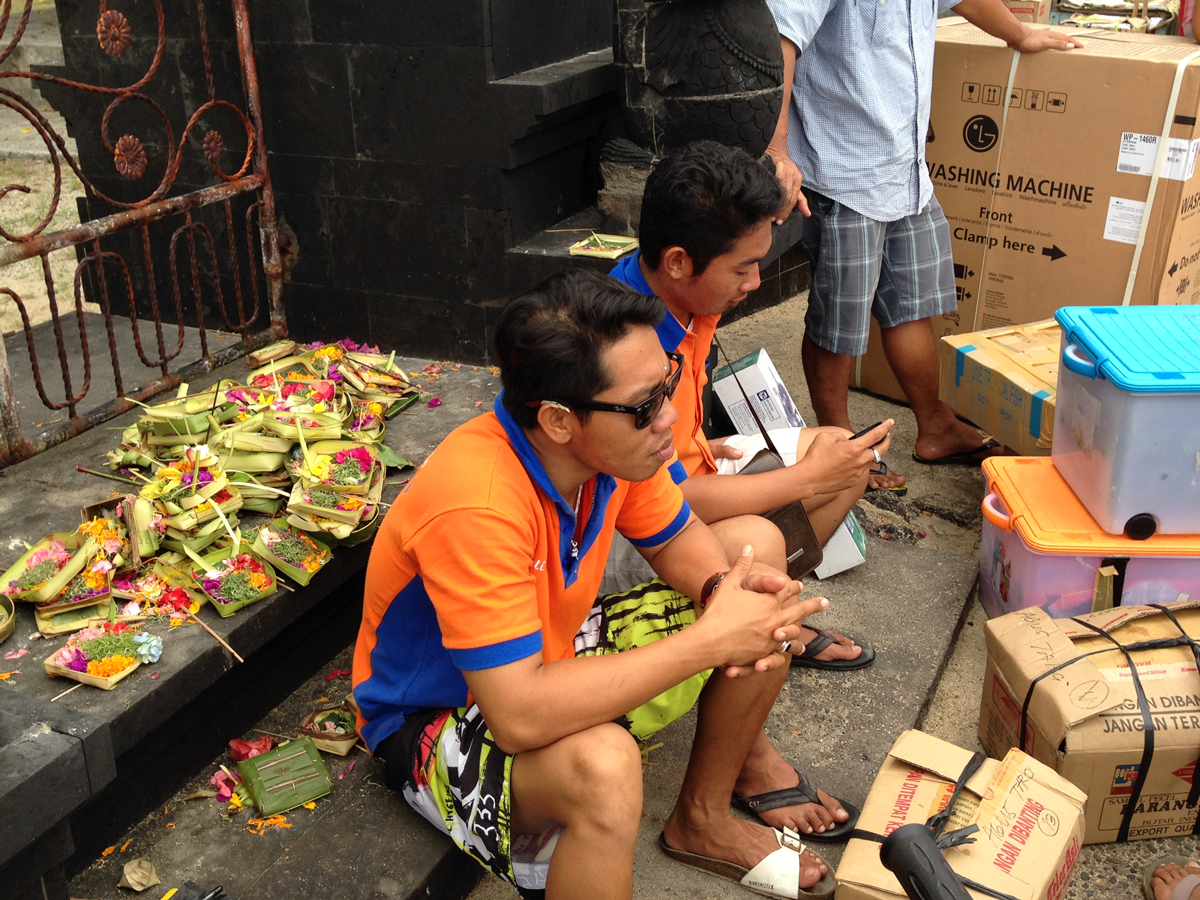Daily life in Lembongan: Offerings in the background. Checking phones in the foreground.
I'm fascinated with emerging markets like Brasil and Indonesia, and one thing I love is getting out on the street and seeing how technology has infiltrated daily life. I've just spent a week in Nusa Lembongan, which is a small island in Indonesia, and I saw some striking mobile patterns there.
In Lembongan, daily life for local people is intimately tied to their beliefs in Balinese Hinduism, and until tourism took over recently, their biggest economic activity was seaweed farming. Against this incredibly traditional backdrop, I was curious to see which mobile devices and apps were being used the most. Here's a snapshot from August 2013.
Overview
In Lembongan, mobile phones and apps were everywhere. Alongside the constant flow of rites and ceremonies, technology was just another part of normal life. Religion and technology coexist intimately. It wasn't uncommon to see someone simultaneously preparing an offering to the gods, and tapping away on their smartphone with the other hand.
Just like big urban areas across the globe, people young and old were sending messages, taking photos, connecting on Facebook, playing games & music, or just messing around on their phones. This was happening everywhere, and particularly so, in the constant downtime that exists between life's moments in Indonesia. Hardly anyone I saw was using their phone to talk. The mix of devices was strongly defined:
Blackberry
Local street merchants and small business operators tended strongly towards Blackberry as their weapon of choice. Low income locals tended to use old school phones with physical keyboards (Nokia etc).
On the street: Blackberry everywhere
Android
Android devices were the dominant choice for tourists from Korea, China & Japan, as well as tourists from other parts of Indonesia itself.
After speaking with many people on the street, Android phones and tablets also appeared to be the most popular choice for young people and the locals who could afford it. Out of the various Android devices, Samsung dominated massively.
On the street: Android.
Apple
Apple devices were used almost exclusively by Australian, European, and American tourists. Very few iPhones or iPads were used by Indonesian locals.
Step out of Lembongan to the International airport in neighbouring Bali, and the contrast was immediate, with travellers from all over the world passing thru. Waiting in queues, passing through, and standing around, the dominant devices were iPads and iPhones (predominately iPhone 5s). Android phones, tablets and the hybrids ran a close second.
At the International airport. iDevices everywhere.
On the plane itself back to Australia, row after row was dominated by iPads, iPhones, and Kindles, as people switched into long consumption and entertainment - watching movies, playing games, listening to music, and reading.
Airport travellers: iPhone
Summary
So that's a quick snapshot of mobile use in Indonesia this month. What's this all mean? Is this a snapshot of the future or the past? It's both, and I love looking at emerging markets like Indonesia to get a picture of the where the world has come from, and where it is heading. These patterns are playing out across the globe right now.




